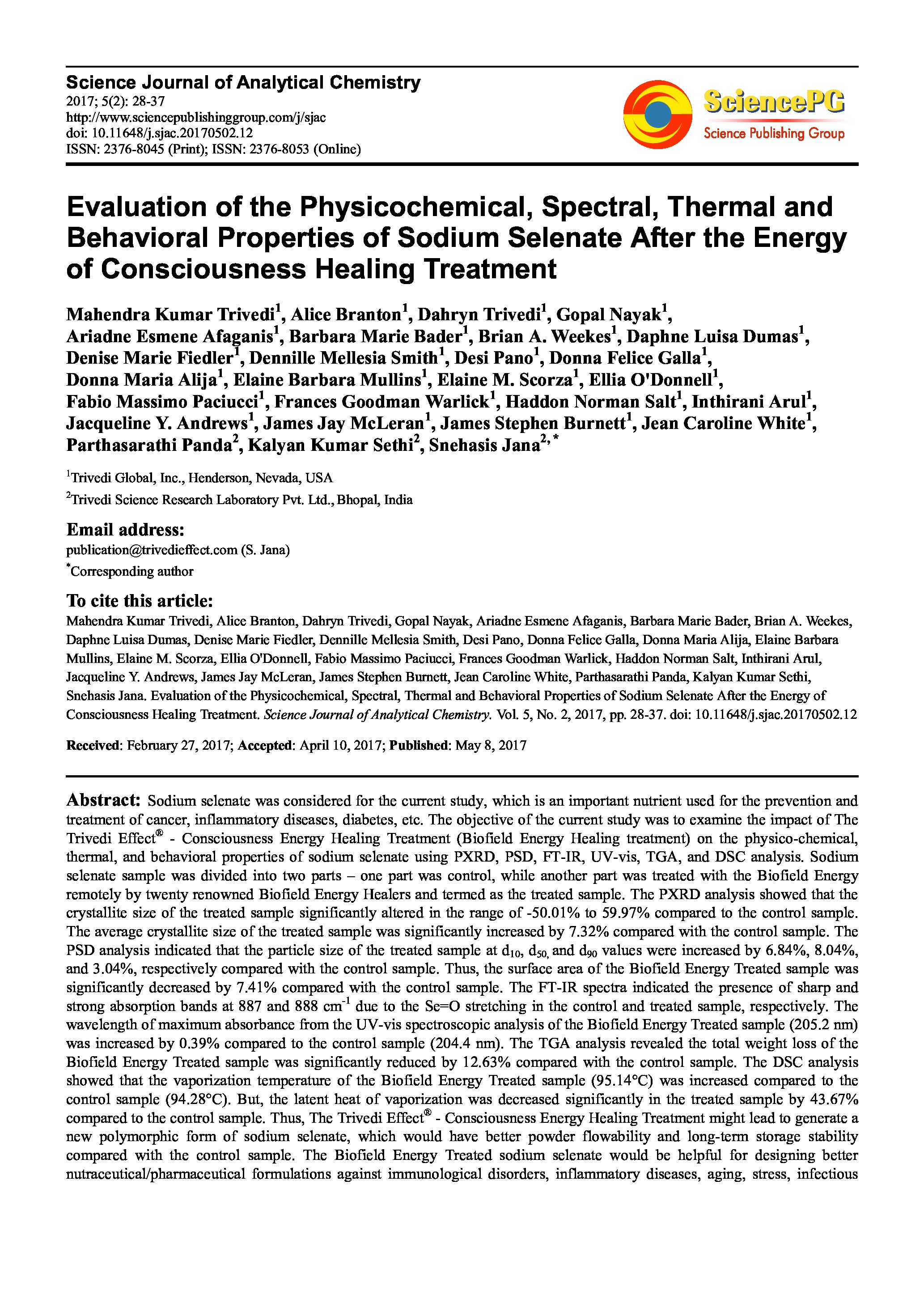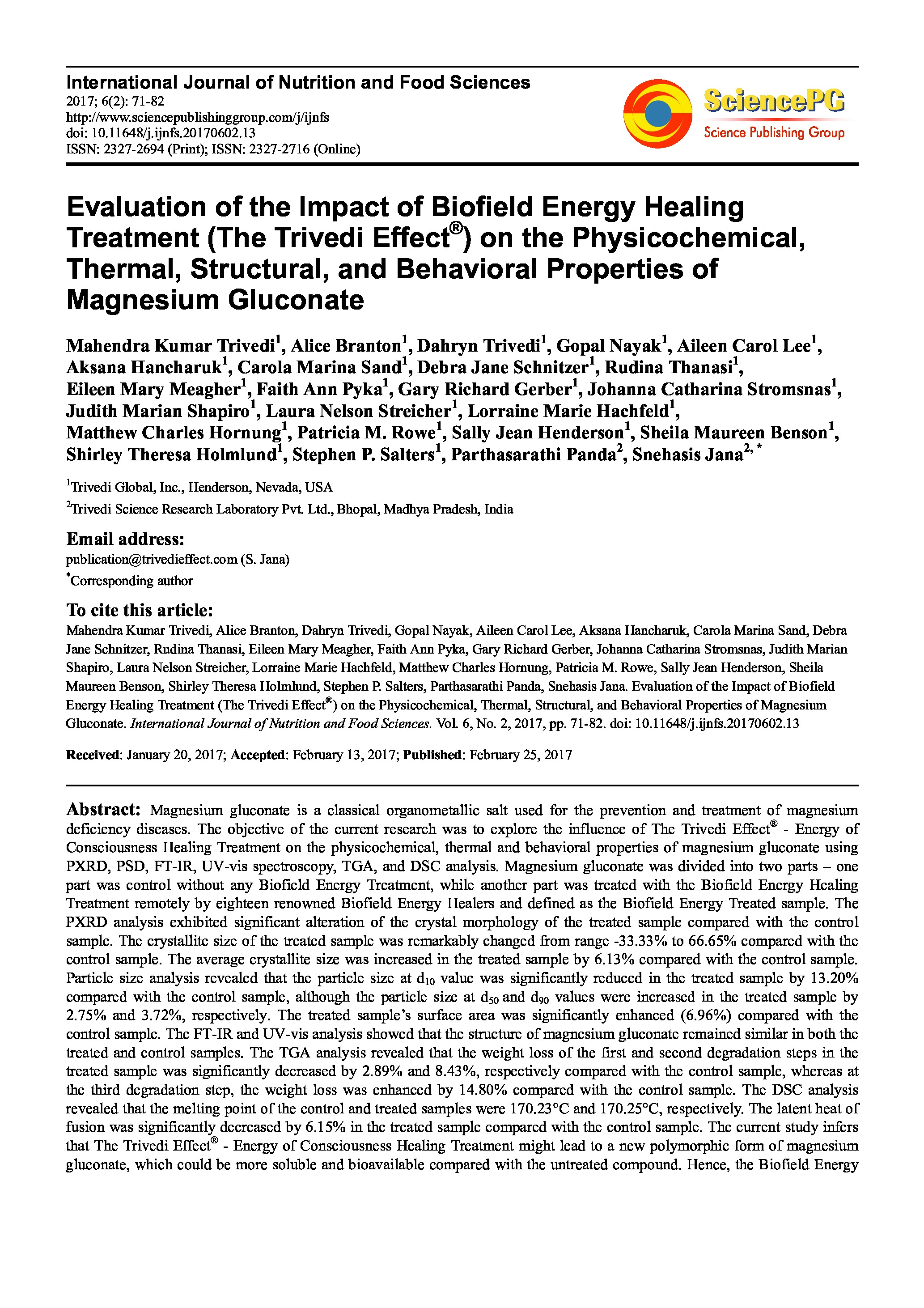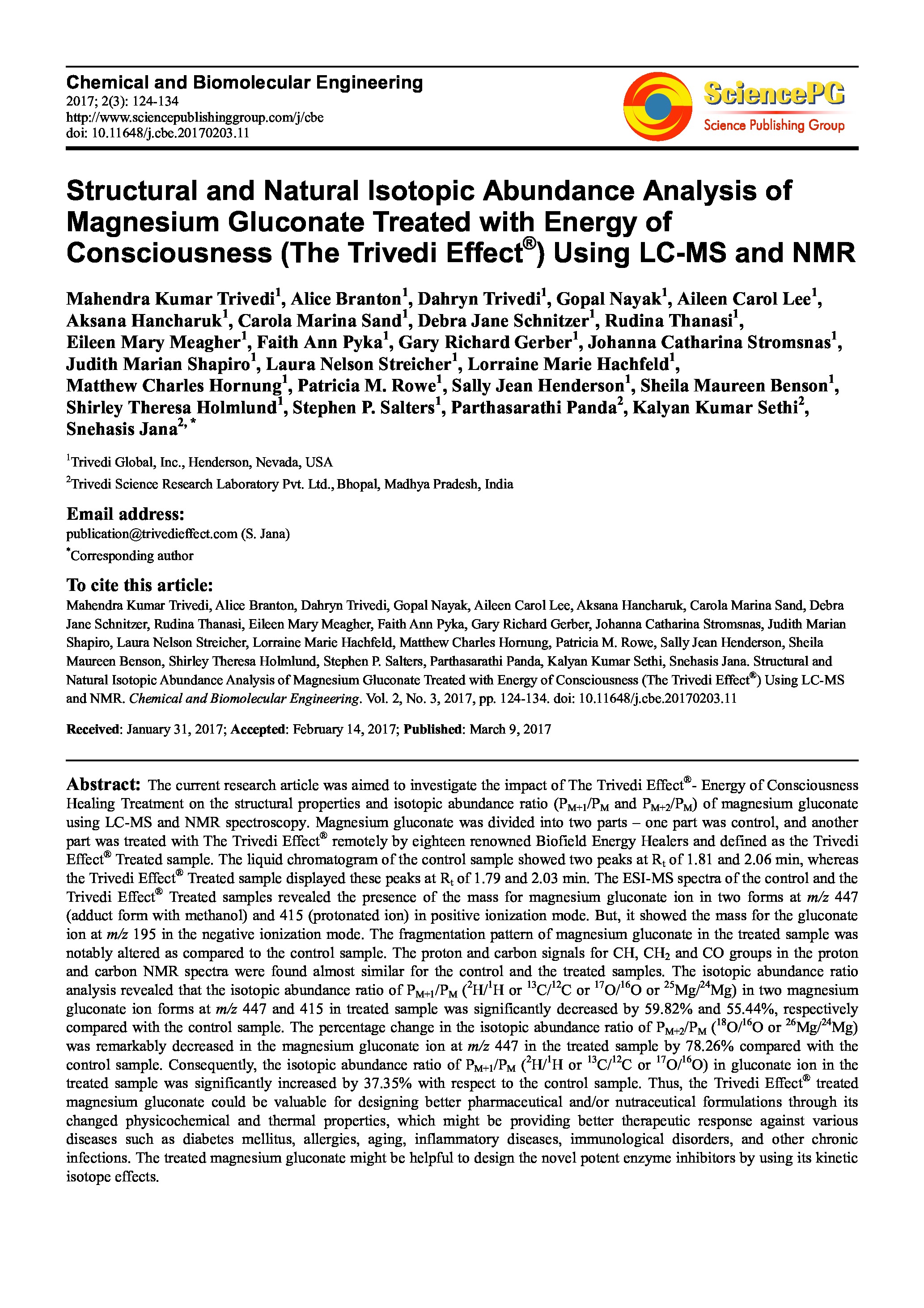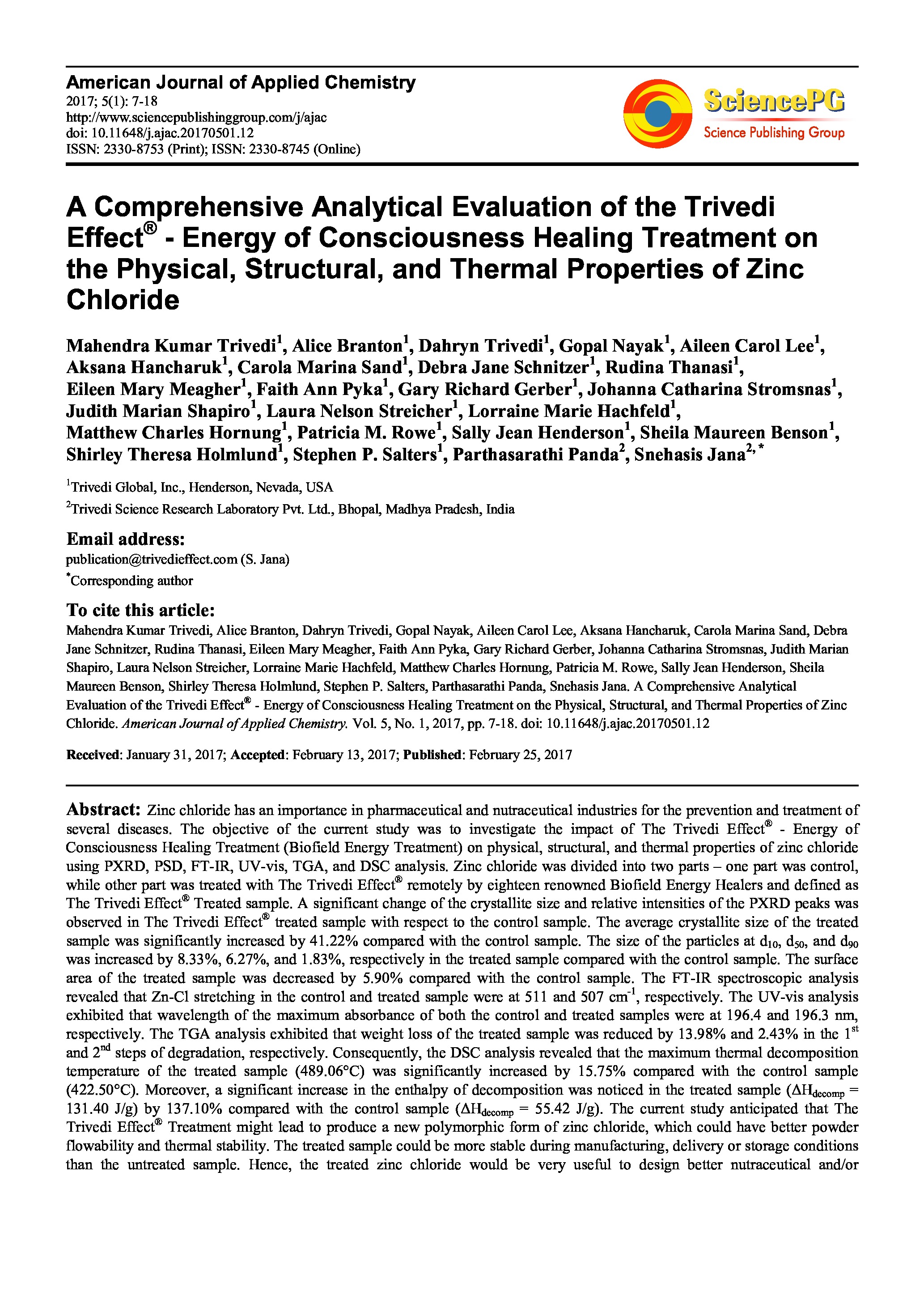Date of upload:
07.07.2017
Co-author:
Mahendra Kumar Trivedi, Alice Branton, Gopal Nayak, Ariadne Esmene Afaganis, Barbara Marie Bader, Brian A. Weekes, Daphne Luisa Dumas, Denise Marie Fiedler, Dennille Mellesia Smith, Desi Pano, Donna Felice Galla, Donna Maria Alija, Elaine Barbara Mullins, Elaine M. Scorza, Ellia O'Donnell, Fabio Massimo Paciucci, Frances Goodman Warlick, Haddon Norman Salt, Inthirani Arul, Jacqueline Y. Andrews, James Jay McLeran, James Stephen Burnett, Jean Caroline White, Parthasarathi Panda, Kalyan Kumar Sethi, Snehasis Jana
Abstract:
Sodium selenate was considered for the current study, which is an important nutrient used for the prevention and treatment of cancer, inflammatory diseases, diabetes, etc. The objective of the current study was to examine the impact of The Trivedi Effect® - Consciousness Energy Healing Treatment (Biofield Energy Healing treatment) on the physico-chemical, thermal, and behavioral properties of sodium selenate using PXRD, PSD, FT-IR, UV-vis, TGA, and DSC analysis. Sodium selenate sample was divided into two parts – one part was control, while another part was treated with the Biofield Energy remotely by twenty renowned Biofield Energy Healers and termed as the treated sample. The PXRD analysis showed that the crystallite size of the treated sample significantly altered in the range of -50.01% to 59.97% compared to the control sample. The average crystallite size of the treated sample was significantly increased by 7.32% compared with the control sample. The PSD analysis indicated that the particle size of the treated sample at d10, d50, and d90 values were increased by 6.84%, 8.04%, and 3.04%, respectively compared with the control sample. Thus, the surface area of the Biofield Energy Treated sample was significantly decreased by 7.41% compared with the control sample. The FT-IR spectra indicated the presence of sharp and strong absorption bands at 887 and 888 cm-1 due to the Se=O stretching in the control and treated sample, respectively. The wavelength of maximum absorbance from the UV-vis spectroscopic analysis of the Biofield Energy Treated sample (205.2 nm) was increased by 0.39% compared to the control sample (204.4 nm). The TGA analysis revealed the total weight loss of the Biofield Energy Treated sample was significantly reduced by 12.63% compared with the control sample. The DSC analysis showed that the vaporization temperature of the Biofield Energy Treated sample (95.14°C) was increased compared to the control sample (94.28°C). But, the latent heat of vaporization was decreased significantly in the treated sample by 43.67% compared to the control sample. Thus, The Trivedi Effect® - Consciousness Energy Healing Treatment might lead to generate a new polymorphic form of sodium selenate, which would have better powder flowability and long-term storage stability compared with the control sample. The Biofield Energy Treated sodium selenate would be helpful for designing better nutraceutical/pharmaceutical formulations against immunological disorders, inflammatory diseases, aging, stress, infectious diseases, Alzheimer’s disease, cancer, diabetes, heart diseases, etc.




